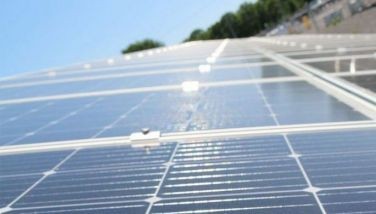Funding for climate-related investments
With the increasing floods we have experienced locally and have been seeing and reading about in world news, it seems timely and of utmost importance that we should put the spotlight on our own efforts – from the government to local banks and Philippine conglomerates – to address our climate change problems through increased funding for climate-related investments.
According to a recent World Bank report, in almost 60 percent of banks in Emerging Markets and Developing Economies (EMDEs), lending for climate-related investment accounts for less than five percent of their overall portfolios, and more than one-quarter offer no climate financing at all.
This is significant, the World Bank report warned, because in developing economies, banks dominate the financial sector, unlike in advanced economies where the financial sector is more diversified.
Climate change, the World Bank pointed out, is expected to have a significant impact on economic opportunities and development outcomes in EMDEs, requiring far greater investment than they currently receive.
Banks in EMDEs, the World Bank report stated, have the potential to play a larger role in closing the climate financing gap.
“Emerging markets and developing economies face substantial financing gaps in low-carbon, climate-resilient investments. We need to step up climate action and crowd in private investment,” said Axel van Trotsenburg, World Bank senior managing director of development policy and partnerships.
“This requires collective action, and the banking sector is indispensable in this transition process. It can play a pivotal role in financing a green, low-carbon and sustainable development path,” Trotsenburg said.
Globally, the Washington-based institution said, banking authorities are testing new approaches to support climate financing without compromising the important goals of financial sector stability and inclusion for underserved people.
It cited, as an example, the adoption of green and sustainable taxonomies – a classification system that identifies activities and investments to move countries toward specific environmental and other targets – which is essential to increasing climate-related lending.
Unfortunately, the report noted, today they cover only 10 percent of EMDEs compared with 76 percent of advanced economies.
“Adaptation is underfunded – only 16 percent of domestic and international climate finance in emerging markets and developing economies (excluding China) is channeled toward adaptation. Out of this small share, 98 percent is either public resources or official financing,” said Pablo Saavedra, World Bank vice president for prosperity.
“In addition to increased climate lending from banks, reducing this gap requires larger capital and insurance markets in developing economies to provide essential long-term funding for critical climate-resilient infrastructure. It’s also important to improve financial access for people, particularly those in vulnerable groups,” he said.
The report, Finance and Prosperity 2024, is the inaugural edition of an annual series that examines financial sector developments and vulnerabilities in low- and middle-income countries. The report includes two special topics: the sovereign-bank nexus and climate and the banking sector.
Based on new data, the report highlights a divergence in the resilience and stability of financial sectors. An analysis of 50 countries, which represent 93 percent of total bank assets in EMDEs, found that 30 percent of these countries face high financial-sector risks in the next 12 months. The majority do not have an adequate policy framework or the institutional capacity to deal with financial stability challenges.
The report also calls attention to the excessive holdings of government debt by domestic banks – an Achilles’ heel for some economies – particularly those with weaker macroeconomic policies facing public debt sustainability challenges. Between 2012 and 2023, the exposure of banks to government debt surged by over 35 percent.
The report recommends that countries strengthen bank buffers well in advance, operationalize financial safety nets, conduct stress tests and put in place a variety of essential tools.
These, the report said, should include strong interagency crisis-management mechanisms, fully operational emergency liquidity assistance, robust bank resolution frameworks and adequately funded deposit insurance systems to reduce the likelihood of financial stress and spillovers to the overall economy.
Additionally, the report concluded, developing economies should consider introducing disclosure requirements for banks’ exposures to the government to encourage more prudent risk-taking by banks and foster market discipline.
- Latest
- Trending



























